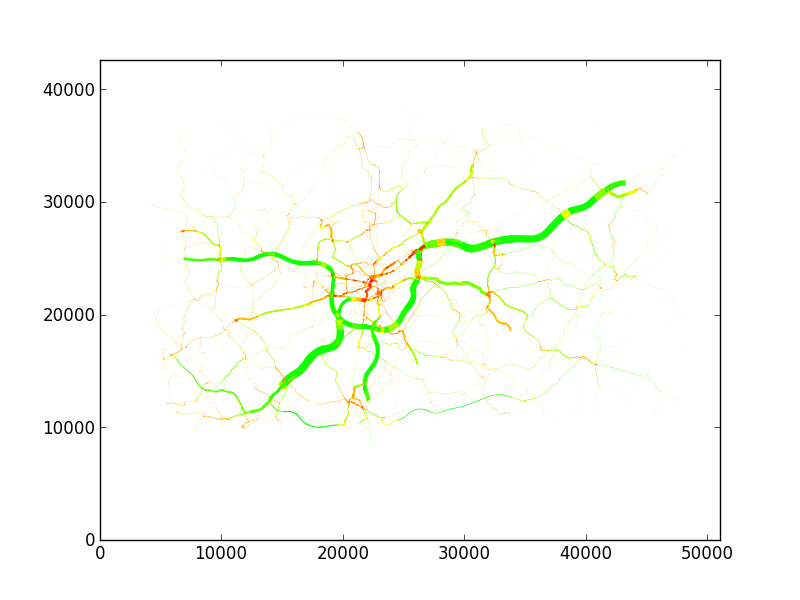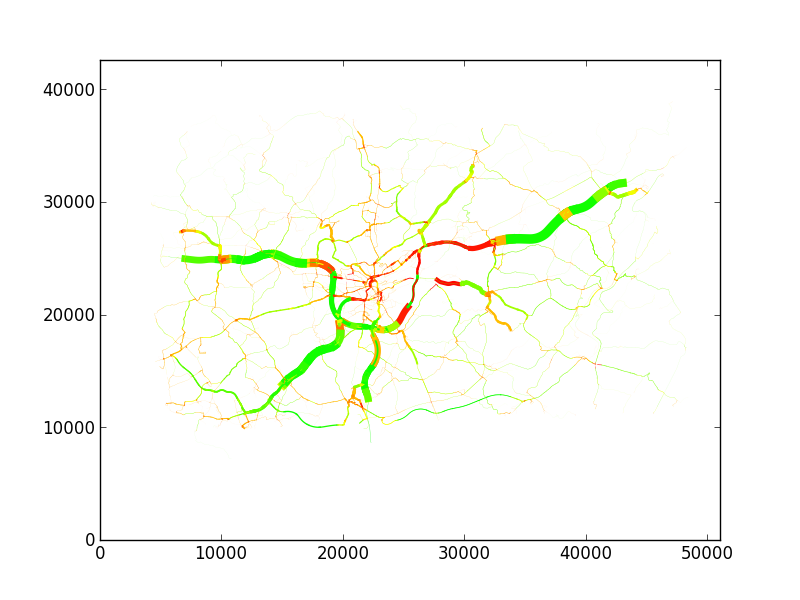VehiLux
VehiLux – Vehicular traces generator- is a Java application that generates realistic vehicular traces over an arbitrary area.
VehiLux takes 3 inputs to determine realistic traces:
- Area – Open Street Map of a desired region – VehiLux reads road network to get potential paths, and metadata about areas to determine places of origin and destination.
- Flow – Data about number of cars passing several measuring points (e.g. data from induction loops or other sensors). VehiLux uses part of measure points to estimate an appropriate number of trips based on the trend existing in given flows. The rest of measurements can be used in validation and optimization of the model to farther increase the realism of generated traces.
- Attractivenes – Additionally, a description of areas of atractiveness can be provided. Vehilux uses this information to tune the probabilities of specified places to become a origin or source places of trips.
The three-level generation of traces Area->Flows->Attractiveness enables to reproduce a general behaviour of traffic for an area as well as a specific behaviour, dependent on specification of the input data.
VehiLux outputs an xml file with sets of trips of individual vehicles over the requested time period that is compatible with SUMO simulator. A trace is determined by a start time and a sequence of road segments.
Check more on VehiLux website
Go directly to VehiLux github project
The generated traces are compatible with SUMO simulator.
The snaphots of of running the simulation with the generated traces for Luxembourg country are presented below:
Traffic conditions at 7:00 a.m. The morning rush hour starts and traffic becomes slower (red colors):

Traffic conditions at 7:30 a.m. The peak of morning rush hour. Most of major roads are congested (red colors and thin line indicating slow speed and small number of passing cars – flow):
